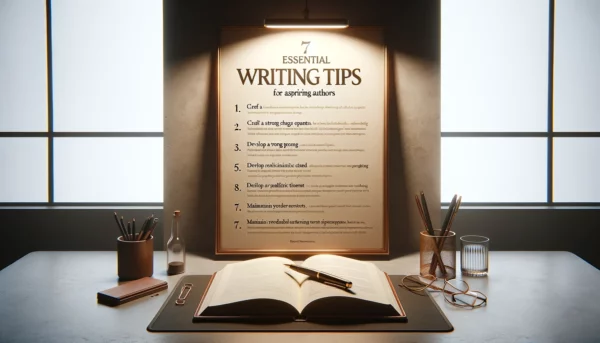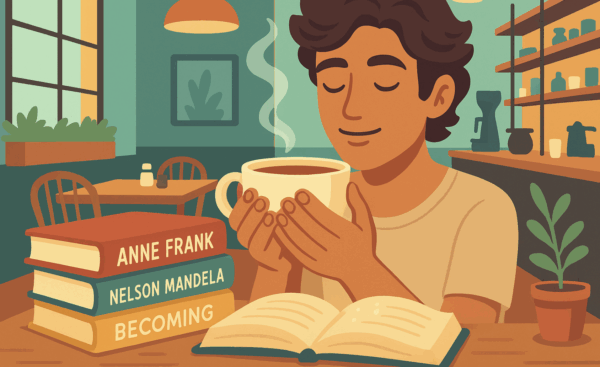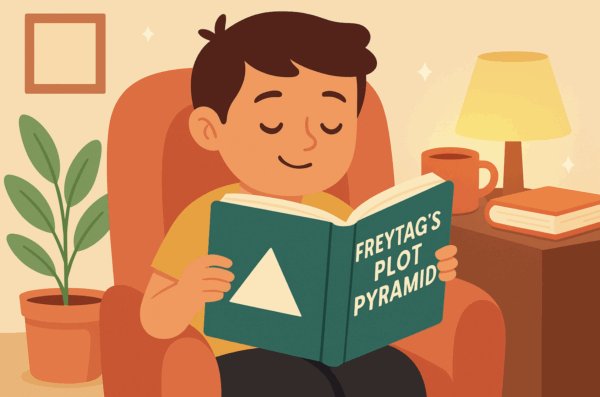Have you ever found yourself cheering for the underdog, the one who’s constantly butting heads with the rules of society? Well, you’re not alone! The character vs society conflict is one of those timeless literary themes that keep us hooked, whether we’re reading about rebellious teens in dystopian worlds or adults trying to break free from societal norms.
But what exactly does this conflict mean? Why do we love stories about characters who go up against the system? In this blog, we’ll dive into the heart of this type of conflict, exploring its definition, what it really means for both characters and readers, and of course, we’ll sprinkle in some classic examples that’ll have you thinking, “Oh, I totally get it now!”
So, buckle up as we explore how characters battle societal expectations, push boundaries, and ultimately shape the world around them—or at least give society a run for its money.
What is Character vs Society?
Imagine a character who doesn’t exactly play by the rules, maybe they’re challenging authority, questioning social norms, or just trying to live life on their own terms. That’s the essence of the this conflict: it’s when a character faces opposition from the world around them.
It’s not just about a person fighting another person, like in the classic character vs character conflict or battling their own emotions, character vs self. In this case, society itself is the antagonist. The character’s battle is against expectations, traditions, laws, or even broader cultural norms. It’s like the character is trying to dance to their own rhythm, but the whole world is out there saying, “No, no, no… this is how we do it here.”
Think of it like this: society’s rules are the dance floor, and the character is the one who insists on doing the moonwalk when everyone else is just doing the cha-cha. Sometimes, that’s a smooth move, but other times, it’s a full-on clash.
This conflict isn’t just a plot device; it’s a mirror reflecting the struggles and rebellions that happen in the real world, where people often challenge societal expectations in their quest for individuality. Ready to explore how this works in real stories? Keep reading!
What Does Character vs Society Mean: It’s Not Just About Rebellion
Okay, so now that we know what this conflict is all about, let’s get into why it matters. You might be thinking, “Isn’t this just about rebellious characters throwing tantrums?” Well, not exactly. While rebellion is a part of it, this conflict goes much deeper than simply kicking against the system for the sake of it.
At its core, it’s all about the tension between the individual and the collective. It’s where the character’s personal beliefs, desires, and actions clash with the expectations, norms, or rules of the larger world around them. But it’s not always just about defiance—it can also be about survival, self-expression, or even the search for freedom.
When a character stands up to societal pressure, they often have to confront big questions like: “Who am I in this world? How much of me should I sacrifice to fit in? Is staying true to myself worth the cost of going against the grain?” These aren’t light questions, and they often lead to some pretty powerful and thought-provoking stories.
So, while some characters might throw their hands up and declare, “I’m not following your rules!” others might be more subtle, fighting against expectations in a quieter, more introspective way. Either way, the battle between the individual and society is always loaded with emotion and complexity, making it one of the most compelling conflicts in literature.
Your Publishing Journey Awaits – Start NowKey Character vs Society Examples: Time to Bring in the Big Guns
Alright, let’s get down to the fun part—examples! Because what’s a literary conflict without some characters shaking things up and making waves? Let’s take a look at a few classic and modern examples that really make you want to stand up and cheer for the protagonist (or maybe cringe at the societal expectations they’re trying to escape).
The Great Gatsby by F. Scott Fitzgerald
If there’s ever been a classic example of a character going head-to-head with society, it’s Jay Gatsby. Gatsby’s whole life is an attempt to break away from the societal constraints that come with his humble origins and to win back Daisy Buchanan, who represents the high society he aspires to join. In his pursuit of wealth, status, and love, he challenges the rigid social structures of the time—only to find out that no matter how much money or power he accumulates, the old-money society he’s trying to break into isn’t about to let him in. Talk about a clash of worlds!
1984 by George Orwell
Now, if you’re looking for a story that truly takes the character vs conflict to dystopian extremes, look no further than Winston Smith in 1984. The society here is a totalitarian regime where every thought and action is controlled by Big Brother. Winston’s rebellion against this all-seeing government is an act of defiance, trying to assert his individuality in a world that demands absolute conformity. It’s a pretty bleak and intense example, but it shows the lengths to which society can go to suppress individuality—and how powerful the desire for personal freedom can be.
The Hunger Games by Suzanne Collins
Katniss Everdeen is the ultimate rebel in The Hunger Games, fighting against a brutal and oppressive society that forces children to fight to the death for entertainment. Katniss’s defiance isn’t just about survival—it’s about making a stand against a corrupt government that values control over human life. As she becomes the symbol of revolution, the story highlights how the individual can spark a societal change, even when they seem to be at the mercy of a system far larger than themselves.
The Catcher in the Rye by J.D. Salinger
Holden Caulfield is one of literature’s most famous disaffected teenagers, and his whole existence feels like a giant middle finger to the norms of society. His struggles aren’t necessarily against a singular oppressive regime like in 1984; instead, it’s a battle against a world he feels is fake, hypocritical, and suffocating. Holden’s desire to protect the innocence of children (his little sister Phoebe, in particular) is his personal form of rebellion, and his journey is all about finding his place in a world that seems to offer him no room for authenticity.
These examples are just the tip of the iceberg when it comes to conflicts between the character and society, but they give us a sense of the different ways this battle plays out. Whether it’s the pursuit of love, freedom, or just the desire to be true to oneself, these characters show us how individuals often have to push against the grain of societal expectations to make a mark—or simply survive.
How Character vs Society Shapes Characters and Plot: It’s All About the Tension
By now, you’ve seen how powerful conflicts between the characters and society can be in driving a story. But what’s even more fascinating is how it shapes both the characters involved and the plot itself.
Character Development: From Rebellion to Reflection
First off, the character vs society conflict is a goldmine for character development. When a character is pitted against society, they are often forced to evolve in ways they never would have if they’d simply followed the rules. The tension between personal desires and societal expectations pushes them to question their own identity, motivations, and values.
Take Katniss Everdeen from The Hunger Games. At the start of the story, she’s just a girl trying to survive in a cruel world. But as the story progresses and she challenges the Capitol, she grows into a symbol of resistance. Her journey is a constant tug-of-war between staying true to herself and embracing the larger role society (and the revolution) demands of her.
This kind of internal conflict is what makes the character’s development so compelling. It’s not just about the character breaking the rules; it’s about how that rebellion shapes them as a person. As they clash with societal norms, they might discover new strengths, face tough moral choices, or even experience profound self-doubt. Either way, the battle with society forces them to grow.
Plot Development: The Catalyst for Change
The conflict doesn’t just shape characters—it also propels the plot forward. After all, nothing gets the story moving like a character challenging the status quo!
In stories where the conflict is at the heart of the narrative, societal pressures often serve as the catalyst for change. The character’s defiance sparks a chain of events that may alter the course of their life, the lives of others, or even society itself. Think of Winston Smith in 1984—his quiet rebellion is the spark that threatens to ignite a much larger revolution against the totalitarian regime.
The plot isn’t just about what happens to the character—it’s also about the impact of their rebellion on the world around them. Will the character succeed in overturning societal norms? Or will they be crushed under the weight of societal expectations? This tension keeps readers on the edge of their seats, wondering if the character will be able to make their mark or if they’ll succumb to the pressures of conformity.
The Ripple Effect: Society Shaped by the Character
What’s also interesting is how the conflict doesn’t just affect the character—it can impact the society they’re fighting against. As the character challenges the norms, the story often explores how those societal expectations and rules are flawed, oppressive, or in need of change.
In some cases, the character’s actions spark wider societal shifts. Think back to Gatsby—his life of excess and ambition exposes the cracks in the American Dream, revealing how the pursuit of wealth and status is hollow for those trapped in the rigid class system. His life, and eventual downfall, serves as a critique of the very society he tried to infiltrate.
This ripple effect creates a fascinating dynamic where both the individual and the society are in a constant tug-of-war, influencing and reshaping one another. It’s a powerful reminder that literature isn’t just about stories—it’s about reflecting and challenging the world we live in.
Famous Character vs Society Examples in Literature: Rebellious Heroes and Misunderstood Rebels
Now that we’ve explored how this conflict shapes characters and plots, let’s look at a few more examples of literary rebels who’ve made a name for themselves by going toe-to-toe with society. These characters don’t just break the mold—they shatter it and leave us thinking, “If they can do it, maybe we can, too!”
Atticus Finch from To Kill a Mockingbird by Harper Lee
Atticus Finch might not seem like your typical “rebel,” but he’s a hero in his own right. In a deeply divided Southern town during the Great Depression, Atticus stands firm in his belief in justice and equality, even when society demands that he conform to racist norms. Defending a black man, Tom Robinson, accused of raping a white woman, Atticus faces fierce opposition from the townspeople who don’t want to disrupt the status quo. But through his unwavering commitment to fairness, he teaches us that sometimes, challenging society’s deeply rooted beliefs is the only way to make a lasting difference.
The Joker from The Dark Knight by Christopher Nolan (and various comic books)
Okay, hear us out—The Joker might not be a traditional protagonist, but his battle is absolutely iconic. The Joker thrives on chaos and operates outside the rules of Gotham’s society, seeking to dismantle its institutions and show that everyone has a breaking point. He’s not fighting for a good cause like some of our other examples, but his conflict with societal norms is undeniable. The Joker forces us to question what happens when society’s rules are pushed to the edge, and how fragile those rules really are when someone is determined to tear them down.
Randle P. McMurphy from One Flew Over the Cuckoo’s Nest by Ken Kesey
Randle McMurphy is the ultimate example of someone who refuses to be controlled by society’s expectations—specifically, the psychiatric system that seeks to break him down. When McMurphy is committed to a mental hospital, he quickly realizes that the staff, led by the authoritarian Nurse Ratched, represent the oppressive forces of society. Rather than submitting, McMurphy challenges the institution, bringing chaos and a sense of liberation to the patients, even if it comes at a personal cost. His battle with the system shows us how one person’s defiance can inspire others to question their own lives and the systems they live under.
Elizabeth Bennet from Pride and Prejudice by Jane Austen
In a time when women were expected to marry well for social standing, Elizabeth Bennet is the epitome of a character who rejects the pressures of society. Rather than marry for convenience or security, Elizabeth refuses to settle for a loveless marriage, even though society expects her to. Her intelligent and outspoken nature challenges the gender norms of her time, and it’s through her resistance that she wins not only the love of Mr. Darcy but also respect for her independence. Elizabeth may not be fighting an oppressive government, but she’s definitely fighting against the rigid class and gender expectations of her society.
These examples show that conflict doesn’t always look the same. Sometimes it’s about breaking free from societal norms, sometimes it’s about questioning authority, and other times, it’s a fight for justice or equality. What all these characters have in common is their willingness to confront societal pressures head-on, often at great personal cost—and in doing so, they force us to rethink the norms and values that shape our own lives.
Embracing the Clash Between Character and Society
From its definition to real-world relevance, we’ve explored how this literary theme continues to captivate us, both on the page and in life. Whether it’s the rebellious hero breaking free from societal constraints or the quiet individual challenging the status quo, this conflict reveals something essential about what it means to be human.
These stories aren’t just about fighting against a rigid system—they’re about finding a voice, asserting individuality, and sparking change, all while navigating the complexities of the world around us. And let’s face it, who doesn’t love a good underdog story where the character refuses to conform, no matter the consequences?
So next time you pick up a book or tune into your favorite TV series, take a moment to notice the subtle (or not-so-subtle) ways characters battle society. From classic works like The Great Gatsby and 1984 to modern tales like The Hunger Games, this timeless conflict remains as relevant as ever.
FAQs – Character vs Society Conflict in Literature
Q: How does the character vs society conflict affect the plot of a story?
The conflict often drives the plot by forcing the character to make choices that either challenge or uphold societal norms. As the character fights against or reflects on societal expectations, their actions spark changes in the narrative, leading to character growth, external conflicts, and sometimes even societal transformation. It keeps the plot dynamic and engages readers with the character’s struggle for individuality.
Q: Can the conflict lead to character development?
Yes! This conflict is a powerful driver of character development. As the character faces societal opposition, they are forced to make decisions that reveal their true beliefs, strengths, and weaknesses. Often, the struggle results in significant growth, whether they come to terms with societal pressures or find a way to overcome them and redefine their role in society.
Q: Why do we find character vs society conflicts so compelling?
We find these conflicts compelling because they mirror real-life struggles. Many of us have faced situations where we had to choose between following societal expectations and staying true to ourselves. Characters who battle against societal norms often inspire us to question our own place in the world and challenge the systems that may be limiting us. It’s relatable, emotional, and empowering.
Q: Does this style of conflict only apply to literature?
While it’s most commonly discussed in literature, the conflict also has strong parallels in real life. People constantly face societal pressures regarding career choices, gender roles, cultural expectations, and more. By reading about characters who fight against these pressures, we gain insights into how we might approach our own struggles against societal norms or systems.
Q: How can character vs society influence a reader’s perspective on the world?
This type of conflict encourages readers to think critically about the world around them. It highlights how individuals can challenge unjust systems, push boundaries, and create change. These stories invite readers to reflect on their own roles in society, inspire social awareness, and may even motivate them to take action or embrace their own unique identity without fear of judgment.







